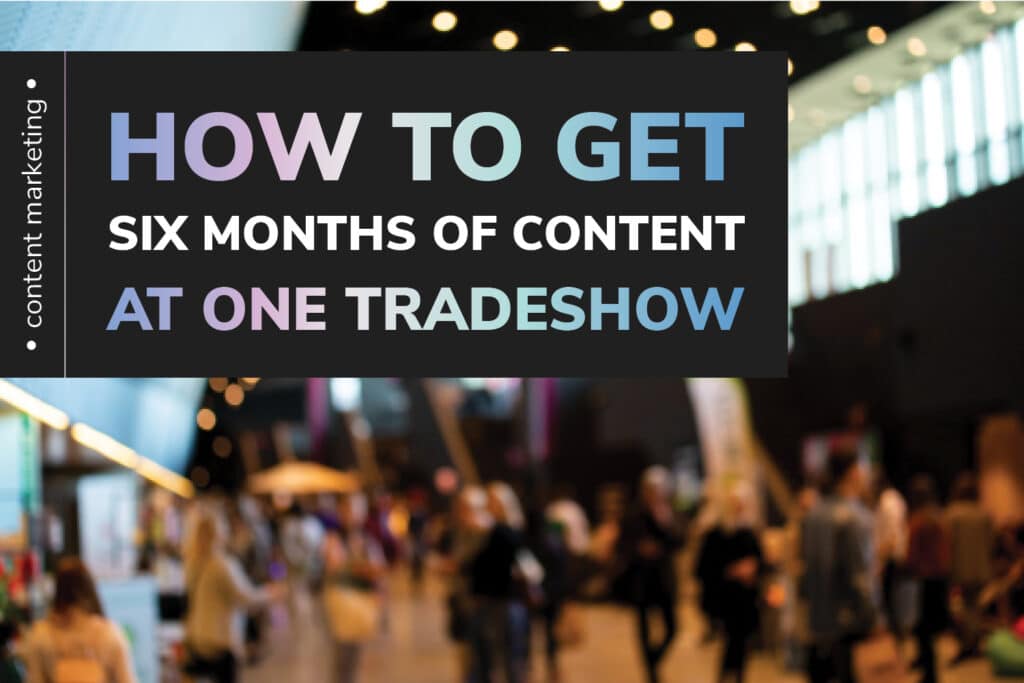A very common strategy to get this opt-in is to provide a lead magnet.
Let’s start by explaining what a lead magnet is, how it’s used, and why it’s not working well for generating leads.
A lead magnet is something of value, such as information or software, that is offered for free in exchange for your personal information. Marketers often use the promise of a valuable download to gather contact information from visitors to their website.
Buyers are getting more and more resistant to entering their contact information on sales pages that promise a download. This is especially true of downloads that contain information that can be obtained with a ChatGPT prompt or even a Google query.
Also, buyers are expecting to self-navigate through product discovery without speaking to a seller. If you are not providing product information to take them through the entire buyer’s journey, you are likely losing opportunities.
If you can’t rely on lead magnets to build the sales funnel, how can you get new leads?
The short answer is to focus on starting a conversation, not on selling.
Using a content strategy to start conversations
The days of driving paid traffic to static web pages in order to create a sales pipeline may be over. Sellers need to develop a more sophisticated content strategy if they hope to engage buyers.
There are two types of content that sellers must master.
- Domain Authority, sometimes called thought leadership content, is intended to educate buyers in general. It is not intended to promote the seller or the seller’s products. It is meant to establish the seller’s credibility and to start a conversation with buyers.
- Product Content has to support the buyer’s need for a self-serve discovery process. Fully 90% of the content that explains your product or service needs to be ungated. In addition, it should address the buyer’s pain points, also called customer journey, not product features.
There are a number of advantages to starting a conversation versus attempting to get a cold prospect into a sales call.
Starting a conversation is much less daunting than signing up for a sales pitch. Also, you can better determine if the person is even a prospect.
Remember that conversations can happen over email, IM, or LinkedIn Messenger. Encourage
Evolving your product message
Starting with product content, buyers want a self-directed process to learn about your product. They don’t want a sales call. This is the other factor that makes ‘Book A Demo’ as the call to action almost as ineffective as cold outreach.
Getting the product message right is the most important starting point in supporting this self-directed journey. The only way to make it resonate is to understand the buyer’s avatar.
An avatar differs from a persona in an important way. A persona is based on demographics. An avatar is about motivation.
To illustrate the difference, assume we are selling predictive analytics software.
A persona might be:
- middle manager
- in the finance department of a medium size company
- responsible for monthly performance reports
The message for our persona might be:
“Are you looking for predictive analytics software to make your monthly reporting easier for your finance department?”
An avatar, on the other hand, is described in terms of what motivates them and might be:
- can never get timely information for performance reports
- is frustrated by the effort required to meet reporting deadlines
- has to manually synchronize data from different systems which often produces errors
For the avatar, the message would be more along the lines of:
What if you had a secret weapon? This weapon could produce real-time forecasts. It would also eliminate copy-and-paste errors. And best of all, it would require almost no effort.
A good avatar suggests a message that will motivate a buyer to take action.
Your product message must constantly evolve based on the needs of your avatar.
Getting page conversions without lead magnets
As mentioned above, the key to product pages is mapping the buyer’s journey.
The following is an actual example of product pages that went from a 1% conversion rate to well into double-digits.
In this case, it was a professional services firm. The Call To Action (CTA) was ‘book a no obligation discovery call’.
During the competitive analysis phase of discovery, two issues and one opportunity arose.
The problem, every firm used virtually the same language to describe its competitive advantage. The firm did not stand out from its competitors.
The second problem, none of the firms had content that explicitly mapped the buyer’s journey. While each firm described its service at a high level, no firm took into account that each service has multiple avatars.
The opportunity, produce content that speaks to the actual avatar and their pain points. This meant producing content for three to five customer journeys per practice.
This content was added to the website under enhanced ‘customer journey’ navigation.
Time on site increased dramatically and page conversion, ‘book a discovery call’, reached 30% in some practices.
Domain authority content
The other category of content that can replace lead magnets for lead generation is domain authority, also called thought leadership.
This type of content is designed to establish your firm as a trusted source of educational or informative content.
The one, unbreakable rule, this content cannot be product content masquerading as thought leadership.
The objective of this type of content is to get conversations started with buyers, not sales calls.
The blog Content Strategies to Dominate Your Vertical is a detailed ‘How To’ guide for creating a domain authority program.
When lead magnets work
The purpose of this blog is not to advocate stopping the use of lead magnets altogether. Instead, it’s intended to question the type of lead magnet and how it fits into your overall content strategy.
Start by mastering product and domain authority content strategies. Better lead magnet ideas are a byproduct of the buyer’s journey work that you must complete.
This makes it easier to create great lead magnets that add value to the buyer.




